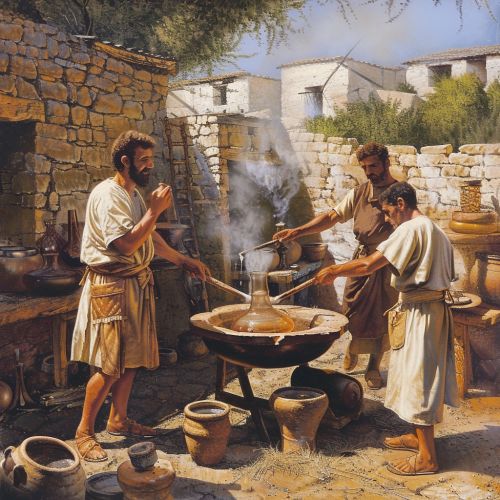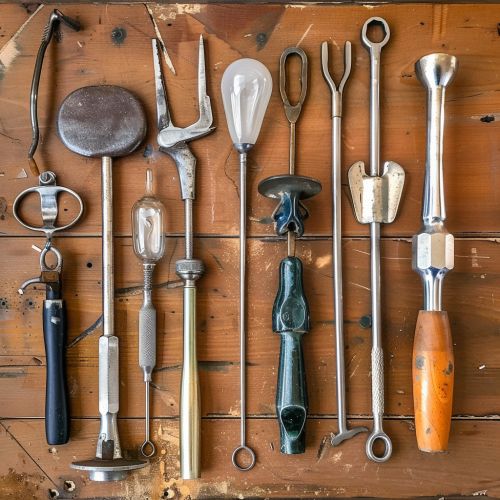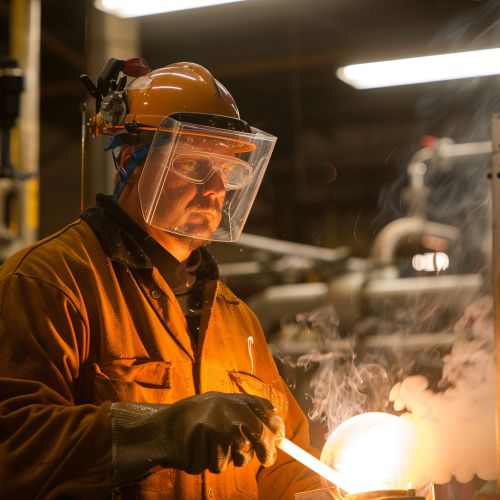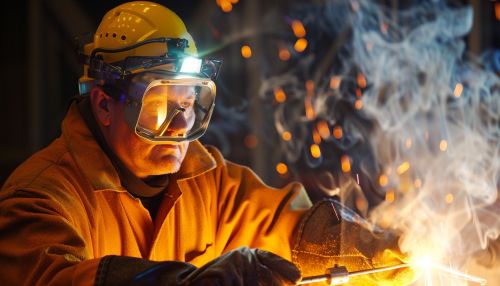Glassblowing
History
Glassblowing is a glassmaking technique that involves inflating molten glass into a bubble (or parison), with the aid of a blowpipe (or blow tube). The technique of glassblowing emerged around 50 BC, somewhere along the Syro-Palestinian coast. The establishment of the Roman Empire provided the impetus for the spread and dominance of glassblowing across the Mediterranean world.


Technique
The process of glassblowing involves several steps. The first step is gathering the molten glass on one end of a blowpipe. This is then followed by marvering, which is the process of shaping the glass by rolling it on a flat, hard surface. The glass is then inflated into a bubble and further shaped using tools and movements. The final steps involve transferring the piece to a punty (or pontil), final shaping, and annealing.
Tools
The tools of glassblowing have remained largely unchanged since the craft's inception. The blowpipe is a hollow steel tube approximately 1.5 meters long, with a mouthpiece at one end and a rounded metal bulb at the other. Other tools include the punty, jacks, shears, blocks, paddles, tweezers, and a variety of specialized tools for shaping and adding detail.


Types of Glassblowing
There are two main types of glassblowing: offhand and lampworking. Offhand glassblowing is the traditional method, which involves the use of a blowpipe and a furnace. Lampworking, also known as flameworking or torchworking, involves melting and shaping glass using a torch.
Studio Glass Movement
The Studio Glass movement in the mid-20th century saw a resurgence in glassblowing as a form of artistic expression. Artists began to use glass as a medium for sculpture, leading to a shift in the perception of glass from a craft to a fine art.
Health and Safety
Glassblowing poses several health and safety risks, including burns and eye injury. Proper safety equipment, including heat-resistant gloves, safety glasses, and appropriate clothing, is essential. Adequate ventilation is also important to prevent the inhalation of harmful fumes.


Environmental Impact
The process of glassblowing has an environmental impact, primarily due to the high energy consumption of the furnaces used in the process. Efforts are being made to reduce this impact through the use of more efficient furnaces and the recycling of glass.
